
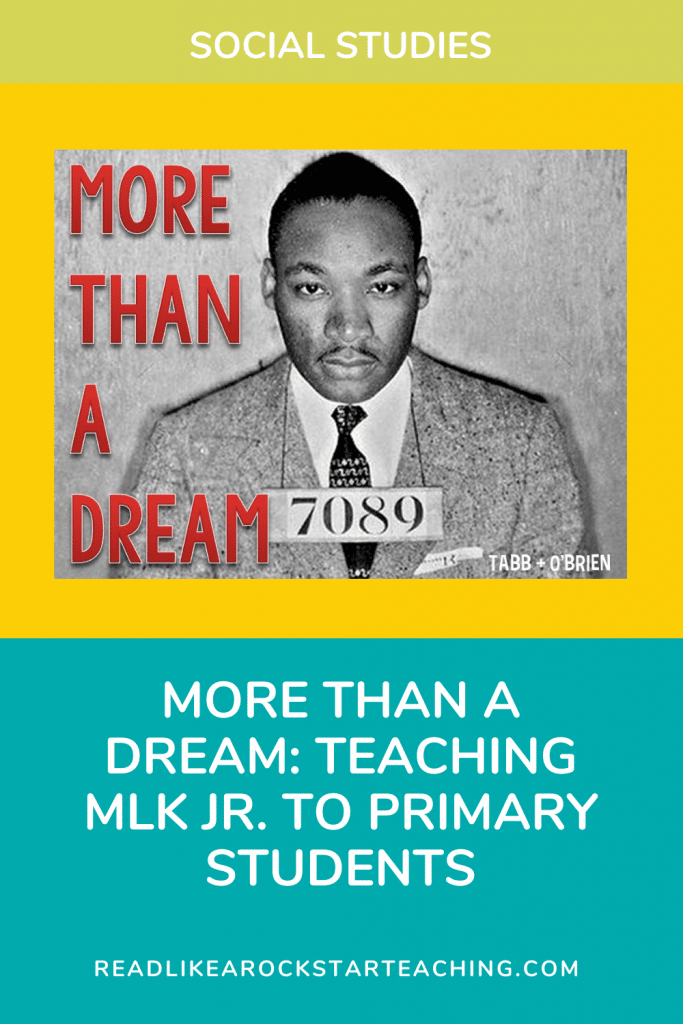
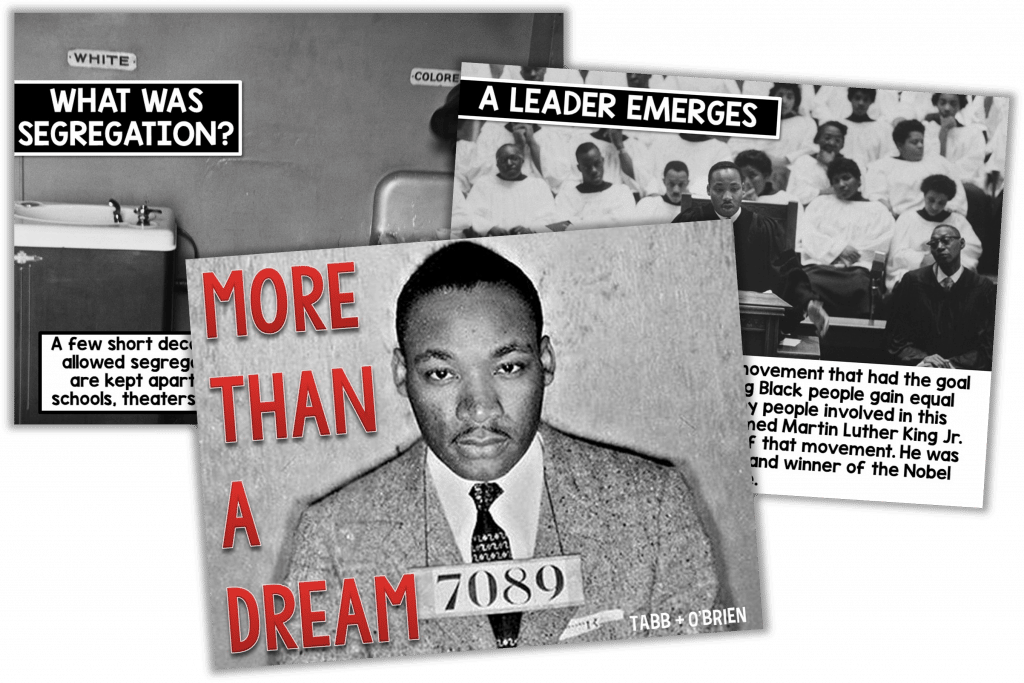
When you think about teaching students about Dr. Martin Luther King Jr. what narrative comes to mind? What about when you think about what you were taught in school? For us, (LaNesha and I) we remember being taught the same story year after year after year in elementary school.
Once upon a time there was a nice man named Dr. Martin Luther King Jr. He couldn’t drink out of white water fountains or go to white schools because he was Black. This made him sad. He wanted to be judged by the content of his character, not the color of his skin. When he grew up he had a dream about Black kids and white kids being BFFS. He nicely told white people to stop being racist and… they all listened! Racism stopped and now Black people can go to school wherever they want. The End.
“The antidote to feel-good history is not feel-bad history but honest and inclusive history.”
– James W. Loewen
Some teachers like to go for a “fun and cute” angle when teaching history, but the truth of the matter is, most of U.S. history is neither fun or cute.
Do we want to be age-appropriate? Of course! But do we want to tell the truth? Absolutely, we do.
It’s so important to tell the truth and be as accurate as your grade level allows. When we think about the amount of adults that hold certain ideas about this nation and their founding fathers, we think about the many lies they have been told and believe that contribute to a society that will not properly address and heal from its past. Honest and inclusive history is the solution to that.
“If you stick a knife in my back nine inches and pull it out six inches, there’s no progress. If you pull it all the way out, that’s not progress. The progress is healing the wound that the blow made. And they haven’t even begun to pull the knife out, much less heal the wound. They won’t even admit the knife is there.”
Malcolm X
Try to get some vertical alignment going at your school. How many teachers in your building are teaching basically the exact same MLK lesson and doing some form of the exact same craft? Chances are your students already know he had a dream. How can grade levels at your school approach these lessons this year? Dr. King was more than just a dream.
Racism is still very much an on-going issue. Are your students simply leaving your lesson with their, “I Have a Dream” writing prompt where most of them wrote down silly things they dreamed about or a wish they had? (If this is the case, the lesson clearly didn’t land and they missed the point).
Or are they leaving your lesson a little bit wiser about the racism people had to face, more understanding of the ways in which those people resisted, and inspired to continue the fight that is still going on today?
Your students should not walk away from your lesson about Dr. King with a sense of relief because he stopped racism. He was killed because of it.
Your lessons should not be white-washed and watered down. Honest history matters. *Gestures at America.
The words you choose to use when discussing this critical lesson matter.
We compiled a few thoughts based on what we have seen and questions we have been asked over the years at our places of work or on social media.
You can call Black people Black or African American (though some Black people, who feel no connection to Africa or America, may prefer a different title).
Do not refer to Black people as colored, coloreds, or the Blacks.
Black people did not and do not experience racism simply because they are Black. They experience it because of people who are racist.
Be mindful of saying things like, “They couldn’t go to the white schools because they were Black.” This implies that being Black is the issue. Try saying, “They couldn’t go to the schools because of the racist people that didn’t want them there.”
No matter who you teach (an all white class or an all Black class or anyone else) make sure your students know that there is nothing wrong with being Black. The problem was white people being racist. Racism is the legacy of enslavement.
Speaking of enslavement, if you reference slavery, “slaves”, or “slave masters”, instead say enslavement, enslaved people, and enslavers.
Masters gives off an air of importance that they simply didn’t have. Enslavers lets people know that someone was actively enforcing this evil and racist practice. It wasn’t just how things were or titles they earned.
Don’t attempt to water down or normalize racism by saying, “That’s just how it was in the past.” For who? It wasn’t just the way it was and many people knew better and were fighting for change from the very beginning.
Check in with students often about how they feel throughout the lesson. Injustice can bring out a lot of strong emotions.
It may be too late now, but it helps if this isn’t your first conversation with students about race, discrimination, or racism.
Before you begin your lesson, think about what you want your students to get out of it. And we aren’t just talking about working on their main idea or summarizing skills. What content do you want your students to know and understand? What life lessons do you want them to walk away with?
For us, we wanted our students to understand that Dr. Martin Luther King Jr. conveyed a powerful illustration of how racism operates and how people at one point in time resisted the unfair treatment. We discuss his impact and the reason there is a federal holiday named after him. Anytime we discuss racism and discrimination, we always make sure to include how people resisted and fought for what was right. We give them hope that it doesn’t have to be that way and that they can be a part of the solution.
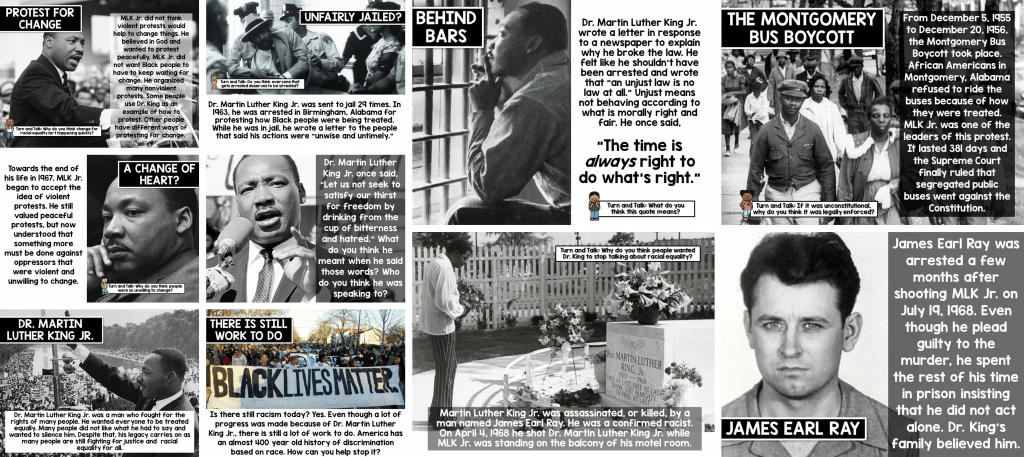
We teach them the facts. We let our students know we have a big and important conversation to have. We read historical information and then ask for students to weigh-in. We ask what they think. We come up with ideas of how we can help. In order to make sure it was appropriate for our students, we researched it and created it ourselves in PowerPoint.

Note: There are many things we allowed our students to debate about over the school year, but racism is not one of them. It is wrong. There are not two sides. There are no pros. End of discussion.
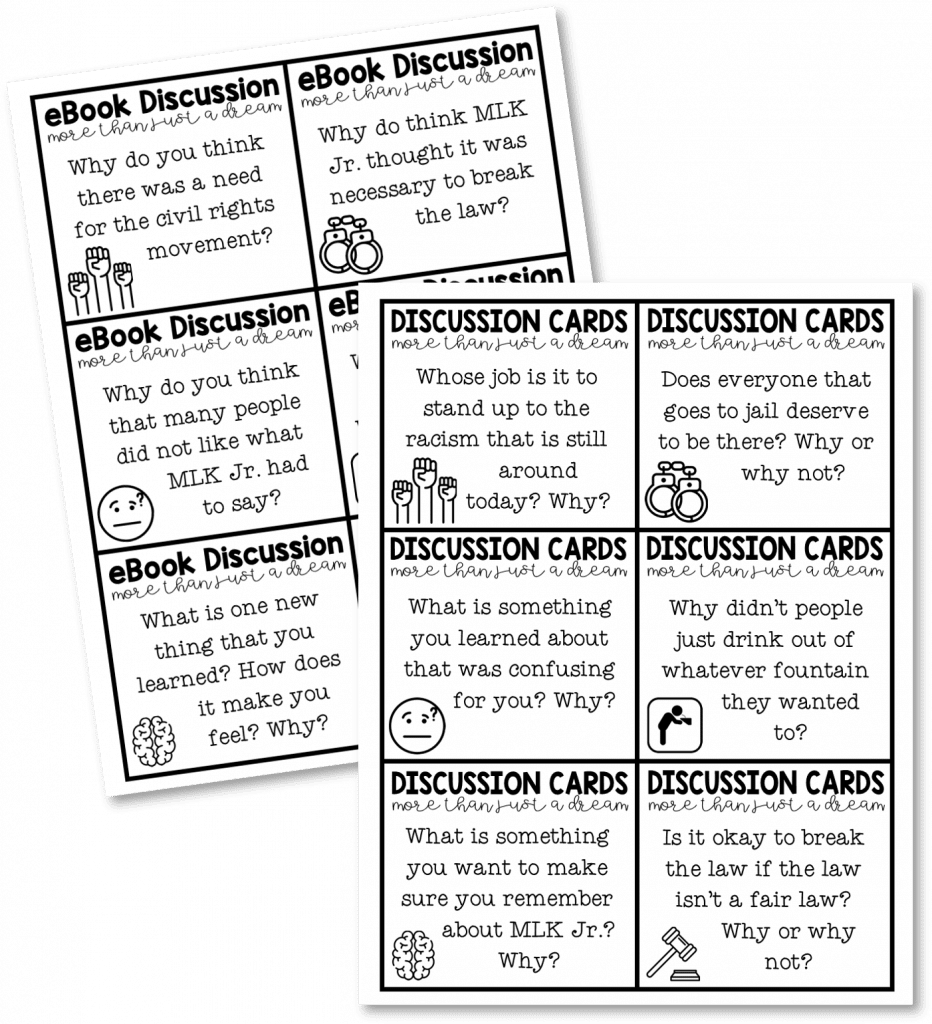
We have whole group discussions, as well as turn and talks with partners. We use students’ answers during discussion time to informally check for understanding.
Children are naturally justice oriented (cue one of them yelling, “That’s not fair!). Most of our lessons end with students brainstorming ways to organize something peaceful to take a stand against present day racism. One year my students voted to create posters and hang them around our school. We also buddied up with a 4th grade class (we were in 1st) to teach the older kids what we learned and find out what they knew about Dr. Martin Luther King Jr. .
*We understand circumstances have changed and ideas may be limited due to covid-19, but there is still action that can be taken that helps students see that their voices and choices matter.
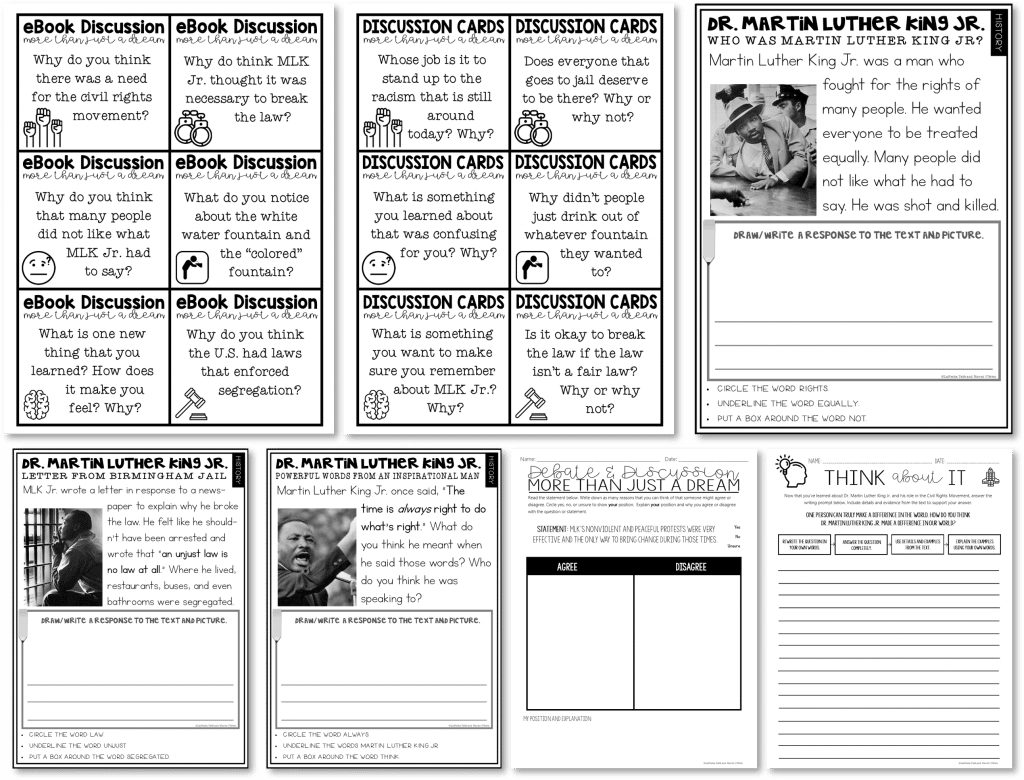
We gave our students the opportunity to process their learning and share their ideas through Draw & Respond sheets, debates, and writing prompts. Our lessons about Dr. King last 4-5 days, to ensure students are truly understanding what they’ve been learning. We read the eBook we created daily during that time.
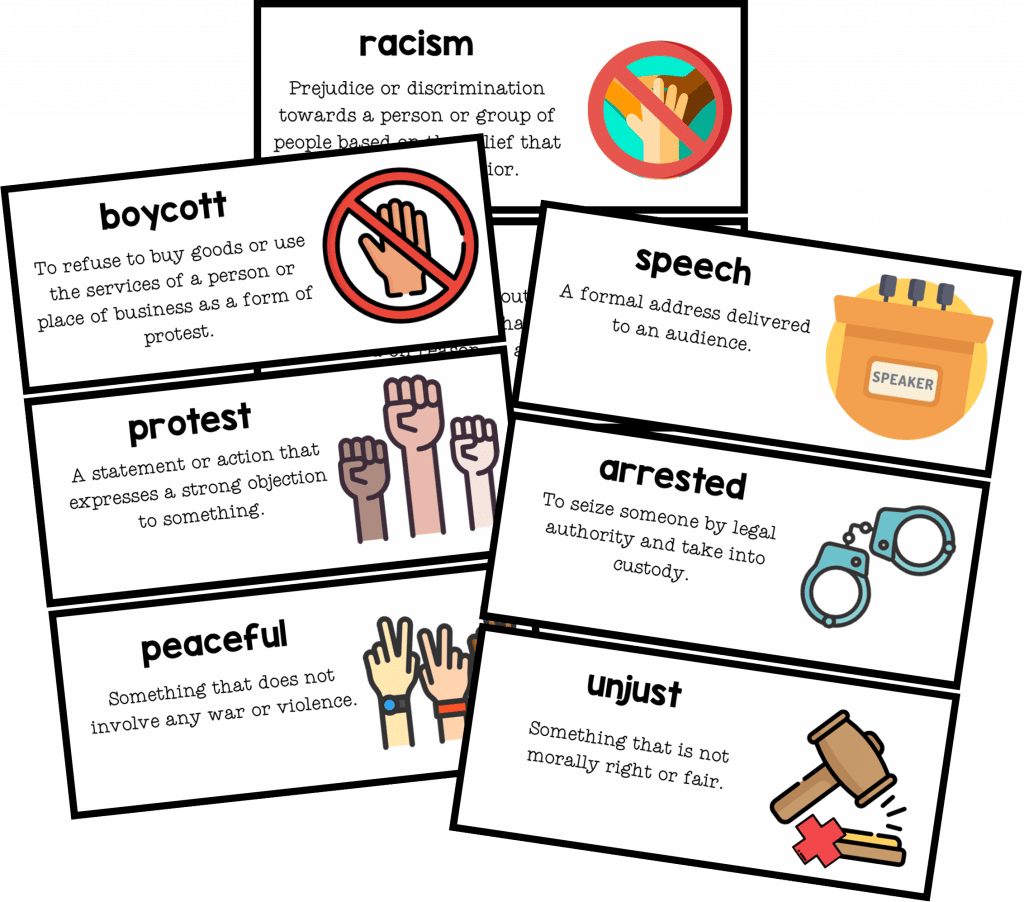
We teach the vocabulary words students will need to access the lesson. These words are also helpful when students are learning about other historical leaders and moments. There is always overlap and it feels good when students make those connections.
Need vocabulary strategy ideas? https://www.readingrockets.org/article/teaching-vocabulary

If you think your students have the information about Dr. Martin Luther King Jr. covered, check out this resource below that explores how his birthday came to be a federal holiday!
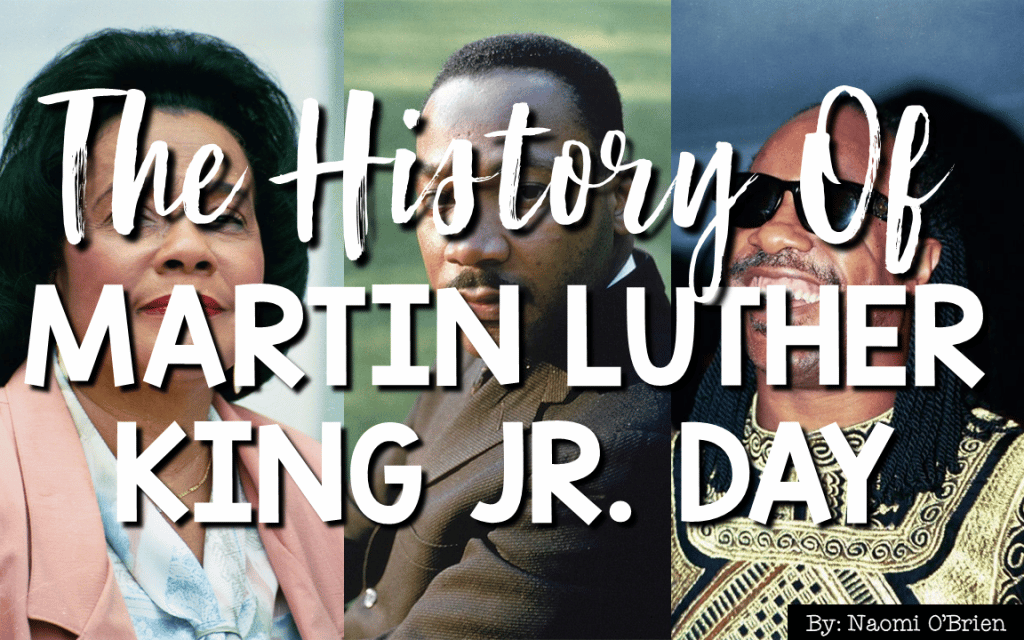
We hope this post was helpful!

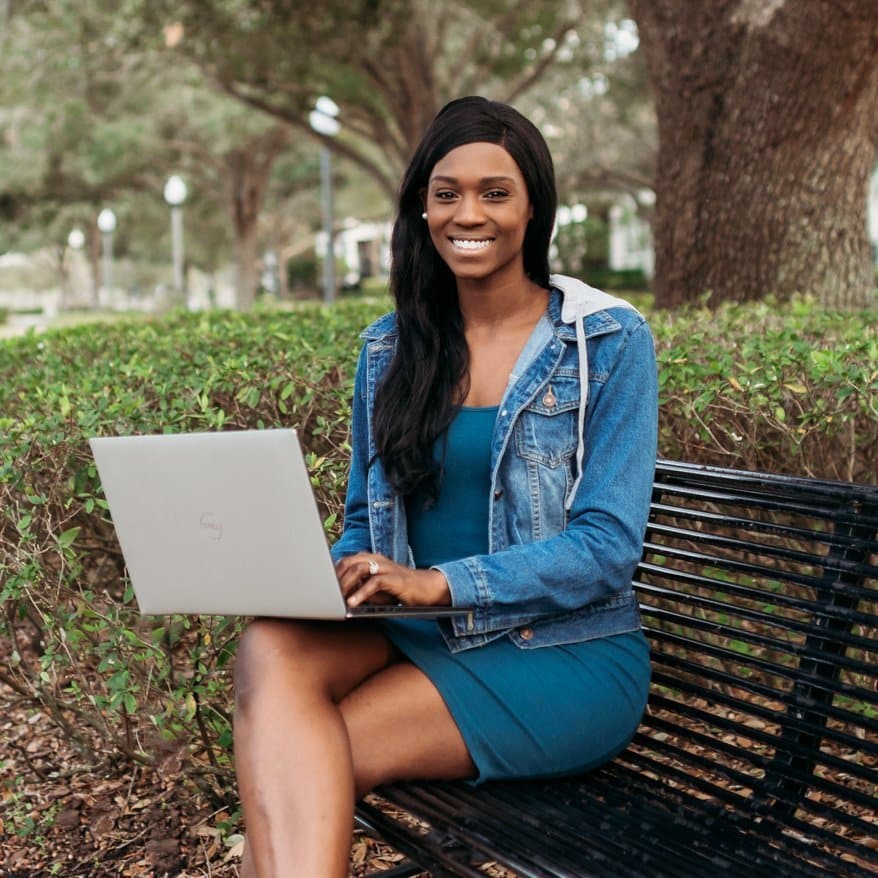
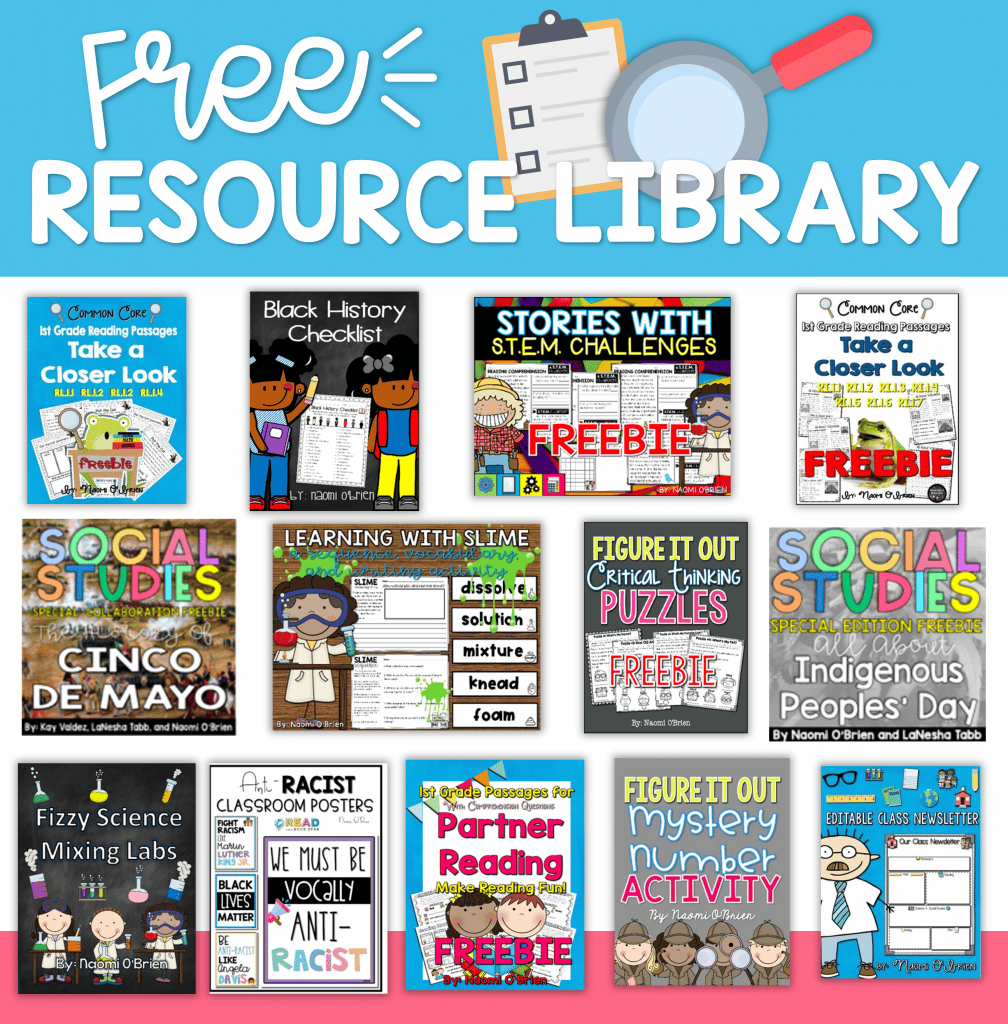
| Cookie | Duration | Description |
|---|---|---|
| cookielawinfo-checkbox-analytics | 11 months | This cookie is set by GDPR Cookie Consent plugin. The cookie is used to store the user consent for the cookies in the category "Analytics". |
| cookielawinfo-checkbox-functional | 11 months | The cookie is set by GDPR cookie consent to record the user consent for the cookies in the category "Functional". |
| cookielawinfo-checkbox-necessary | 11 months | This cookie is set by GDPR Cookie Consent plugin. The cookies is used to store the user consent for the cookies in the category "Necessary". |
| cookielawinfo-checkbox-others | 11 months | This cookie is set by GDPR Cookie Consent plugin. The cookie is used to store the user consent for the cookies in the category "Other. |
| cookielawinfo-checkbox-performance | 11 months | This cookie is set by GDPR Cookie Consent plugin. The cookie is used to store the user consent for the cookies in the category "Performance". |
| viewed_cookie_policy | 11 months | The cookie is set by the GDPR Cookie Consent plugin and is used to store whether or not user has consented to the use of cookies. It does not store any personal data. |
Thank you for your interest in booking a private professional development experience! Please fill out our Booking Inquiry form and a member of our team will contact you soon.
One Response
I have been working to create vertically aligned MLK day lessons for my school to help us move away from “I have a dream,” and go deeper. Your resource is exactly what I was looking for to get us going. Thank you!